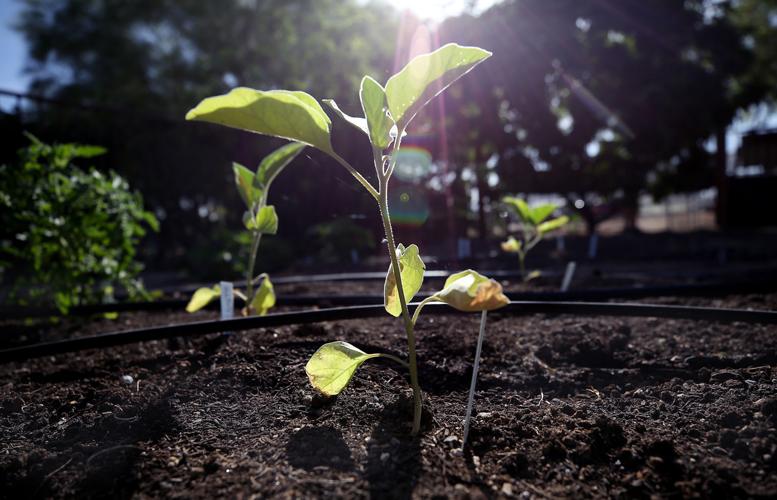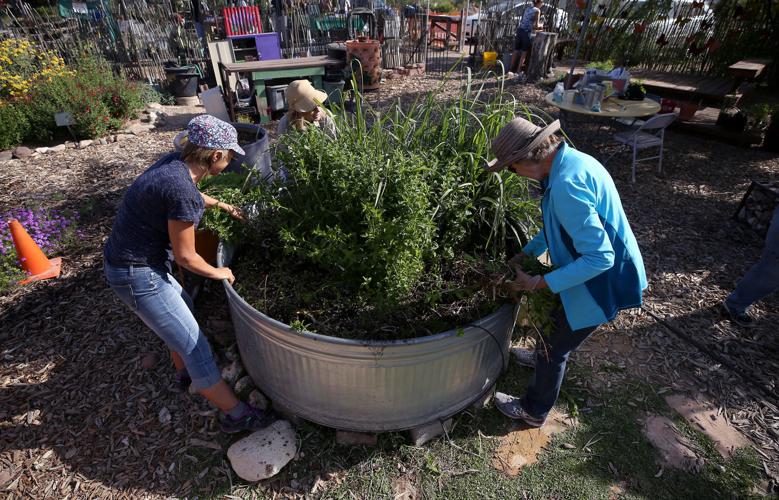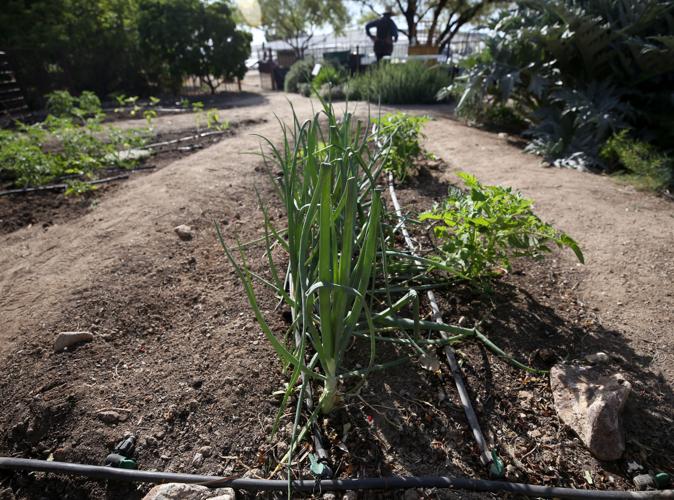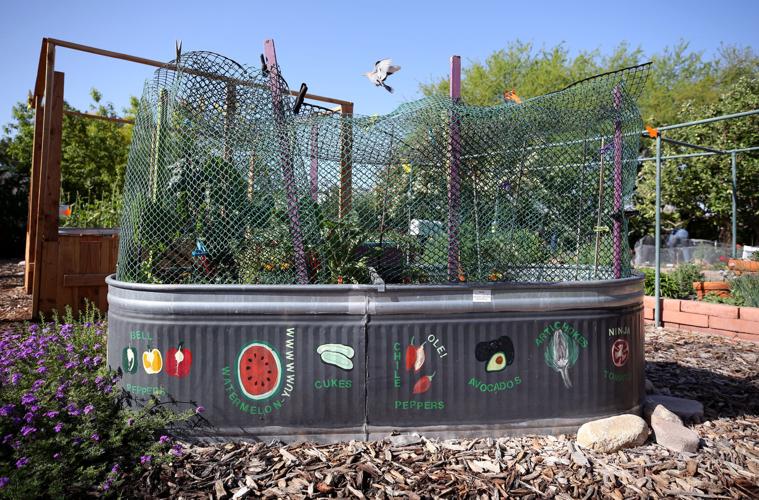Ding, ding, ding, ding! And now for the edible gardening match of the day. In this corner — raised beds! In containers or frames, raised beds represent easy gardening.
In the other corner — basin gardens! They keep gardening real, right in the dirt with a shallow hole in the ground or a ground-level bed surrounded by a berm.
The judges for today’s bout are Pima County master gardeners Toni Moore, coordinator of the county’s Cooperative Extension container demonstration gardens; David Mount, co-coordinator of the county’s basin demonstration garden and co-chair of a Community Gardens of Tucson location; and Michael Ismail, who also owns Thrive and Grow Gardens, a consulting and installation firm.
OK, let’s keep it as clean as possible.
ROUND 1: COST
Raised beds are on the ropes in this round. “The price is a biggy,” says Mount. “It’s a lot cheaper to dig your basin and plant things.”
For raised beds, you’d have to buy the container or material for the frame, says Ismail. You may have to pay for labor to have someone build the bed frames. You have to buy all of the soil to fill containers and frames since native soil doesn’t hold water well and doesn’t have the requisite nutrients for non-native edibles.
Moore urges against trying to save money or reduce weight by partially filling a container or frame with another medium such as gravel, packing peanuts or cans.
The change of texture creates an underground water table that will rot roots. Plus, you’re limiting the places plants can use for growing roots.
There’s also added expense if you use a drip or other irrigation system instead of hand-watering. Basins are much easier because you can flood the garden and let the water slowly seep in, Moore says.
Basin gardens also need amended soil, but the cost can be reduced by mixing it with native soil.
ROUND 2: PREP
Raised beds fight back in Round 2. Pots, stock tanks and bed kits are essentially “plug and play” ways to garden, says Moore. Set up the bed, throw in enriched, purchased dirt and you’re ready to plant.
Ismail says new gardeners in particular will find more success using the right soil from a garden center than trying to amend native soil to the right mixture. “Soil conditions are really a challenge for people,” he says.
Mount concedes that digging desert dirt at least a foot down for a basin or ground-level garden will be tough in places like the Foothills, where gardeners encounter large rocks and cement-like caliche.
But most of the valley areas have clay and silt, which are easier to dig through, he adds.
ROUND 3: DESIGN
You can customize a raised bed so that you don’t have to bend too far or kneel to work on your plants. “Accessibility is the reason most people like it,” Moore said.
Such gardens need to be narrow enough so that you can reach the middle of the beds, says Mount. Also, the gardening area is limited to the raised bed or container size.
“Basins can be quite large,” he says, since you can walk among the plants — although Moore counterpunches by saying you don’t want to do that or you’ll compact the soil.
Basins also better accommodate plants that spread out like squash and cucumbers, Mount says.
ROUND 4: PLANT CARE
Judges may score a draw on this round.
Basins take the most advantage of flood irrigation and rainwater, says Mount. The water is contained where it’s most needed, not running off to other parts of the landscape. That keeps the soil moist longer and can reduce the frequency of watering.
Edibles in pots require much more constant watering, says Moore, “daily in the summertime for sure.”
How quickly soil in raised beds dries out depends on the material. Cinder blocks hold water well, she says, but wood not so much.
Mammals and other ground-based critters have easier access to the garden buffet at ground or below-ground level. It’s a harder climb into raised beds and containers, particularly smooth-walled ones like stock tanks, says Moore, and, as Ismail notes, those lifted off the ground.
ROUND 5: MAINTENANCE
Other costs for raised beds include maintenance such as preserving or replacing wood frames.
If soil in raised beds or containers becomes diseased with fungus or other plant-killing conditions, all of the soil needs to be replaced, says Moore. In-ground beds need soil replaced only where the problem is occurring.
Both types of gardens need soil amending before every planting season to make sure enough nutrients are available.
Adding new soil to existing basins means you’ll eventually have to either remove the old dirt or build up the sides to maintain the basin, Mount says. Otherwise, the ground eventually flattens out.
ROUND 6: LOOKS
Raised beds get style points in this round. Basins are basically holes in the ground. With raised beds you can add color, texture and even architectural features such as benches.
“They are an intersection of art and ecology,” says Ismail. “Sometimes that achieves another objective, integrating into the landscaping.”
THE WINNER
Judges call it for the gardener. Both types of beds work well in Tucson’s growing conditions, says Moore. “It’s just a matter of personal taste.”
What Ismail considers above all else is what will get you to garden.
“It’s so situational,” he says. “It’s based on a person’s space, physical limitations, what they want to grow.”
Knowing what will work for you starts with narrowing your list of pros and cons for each type of gardening. “My approach isn’t really to convince (gardeners) one way or the other,” he says, “but how they can be successful.”








